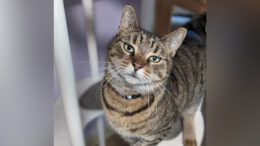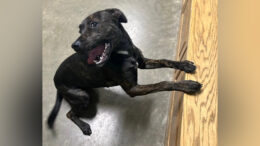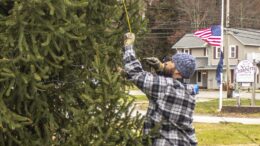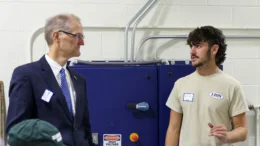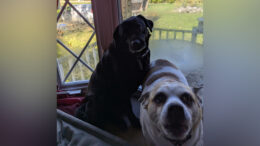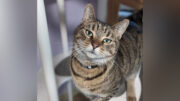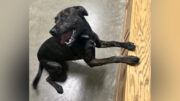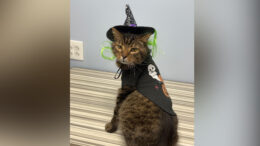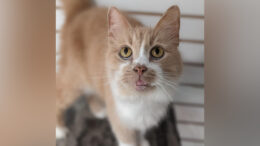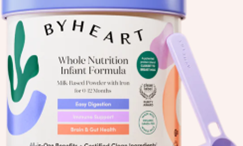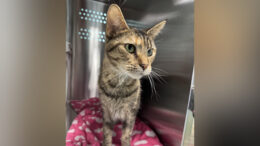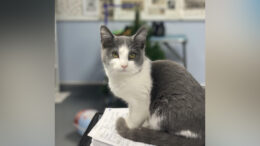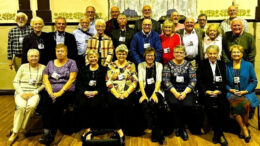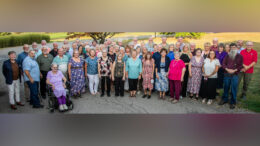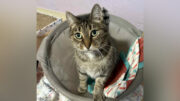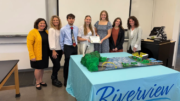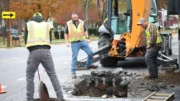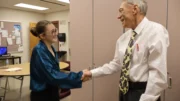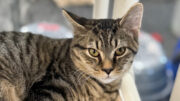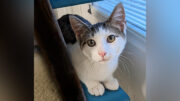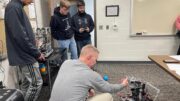By BROOKE WHITLING – Student contributor
(Editor’s Note: In order to secure this interview, a request had to be made and approved through UPMC headquarters in Pittsburgh. For confidentiality purposes, it was necessary for the interviewed nurse to remain anonymous.)
In the middle of March 2020, the world became a host to conditions unseen in a century. For nearly a year, society has been widely characterized by the fear of endangering family members, friends, and complete strangers, alike. People are seen taking every measure possible to avoid potential exposure to COVID-19: grocery pickups, self-isolation, and cyber-schooling, among others. However, not everyone is given the luxury of making these adjustments to prevent possible susceptibility; every single day, COVID-unit health care workers begin their shift knowing that they will face exposure. These courageous, selfless individuals can be accurately depicted with one word: heroic.
Recently, I was blessed with the opportunity to catch a glimpse of life through the eyes of a local COVID-unit nurse. My momentary, virtual placement in her shoes was an impactful one; very few are fit for the pair.
Since joining UPMC, she has traveled from specialty to specialty until sliding into place with her passion. Beginning last spring, however, she moved from her typical position and selflessly volunteered to work in what is affectionately referred to as “The Cave.” In every shift, she, along with her coworkers, can be seen taking on additional responsibilities to provide the best possible care while creating the least amount of risk. In addition to typical patient care, the COVID-unit staff has taken over various janitorial and house-keeping duties in the wing. It is now just a part of the job to empty trash and linen dispensaries, pass trays, and clean up room spills. Nurses are also administering treatments that would ordinarily fall upon other departments to limit hospital-wide exposure. As the COVID patient count has grown, the unit has adapted.
Even with increasing needs, the unit workers continue to provide patients with impeccable care. Because they constantly need effective personal protective equipment (PPE), the brand, texture, or color of the items may change from one day to the next. Resource adjustments extend beyond materials to staffing challenges and space requirements as well. To compensate for staffing shortages, specific volunteers are asked to jump in, and regular unit members are consistently adding extra shifts. The nurse expressed overflowing gratitude for every worker that has been there for the unit’s “all hands on deck” days. The maintenance department has made multiple adjustments to the unit’s configuration, creating additional functional space when it is needed. Another component, vital to the unit’s dynamic, is the Patient Care Tech (PCT) staff. PCTs carefully monitor the patients and watch for changes, which allows unit members to promptly reassess and address any evolving needs.
“We couldn’t do half of what we do as nurses without the amazing Patient Care Techs at our side.”
In the COVID-unit, every single member is crucial in upholding the group’s standard of care. Workers sense when other staff members are struggling and adapt their roles to fill in the gaps, an understanding resulting from hours upon hours together. Through the past year, they have become quite familiar with the physical and emotional struggles that everyone within the unit and field are facing.
“If anything, I think it has brought us closer together and kept our morale up.”
The unit members often find themselves spending more time with their co-workers than their families. This allocation of time is another sacrifice that the health care professionals make in their dedication to the wellbeing of their COVID-19 patients.
This placement has spread its fingers to touch every section of her life, especially the measures taken with her family. Outside of the hospital and her home, she does not travel. Her family relies on grocery pick-ups, her husband’s shopping trips, and Amazon Prime to purchase the products they need. In addition to masking and sanitizing themselves in their limited physical trips, her family frequently wipes down everyday objects, such as cell phones.
Because of her exposure, they have not been able to visit with family members beyond Facetime. In fact, she has not seen her grandparents in months. When she works shifts for multiple consecutive days, her children stay with their grandparents. Ultimately, her family was unable to physically celebrate Thanksgiving or Christmas with anyone outside of their immediate household members.
While many non-medical professional families within the area may be making similar choices to maximize personal safety, there are instances of opposition toward dedicated health care workers. Whether these are implied or directed, they can be witnessed as anything from dirty looks while wearing scrubs to refusal of service or confrontation at a gas station. Because there is a spectrum of community opinions, some individuals may disagree with the request of face coverings, such as masks or shields. However, participating in these measures is a small way to assist medical professionals.
“I wish the nonbelievers could come to work with us for just an hour; you would maybe change your mind.”
Regardless of one’s opinion on the matter, COVID-19 is here, and it is real. In a time when health care workers are sacrificing everything to save critically ill and suffering community members, debating the necessity of face coverings is not constructive. Criticizing medical professionals after they have spent countless hours providing their patients with the utmost care will not quicken the return to normalcy. Since April, they have put their lives on hold, and they will continue to selflessly do so until it is no longer necessary. Even though non-medical professional lives have slowly transitioned into a semi pre-COVID state, it is imperative to remember what these generous, heroic unit workers are giving up to provide community patients with a chance at continued life.
Brooke Whitling is a student at Cranberry High School and a member of Cranberry Chronicles, the school’s journalism/publications class.


